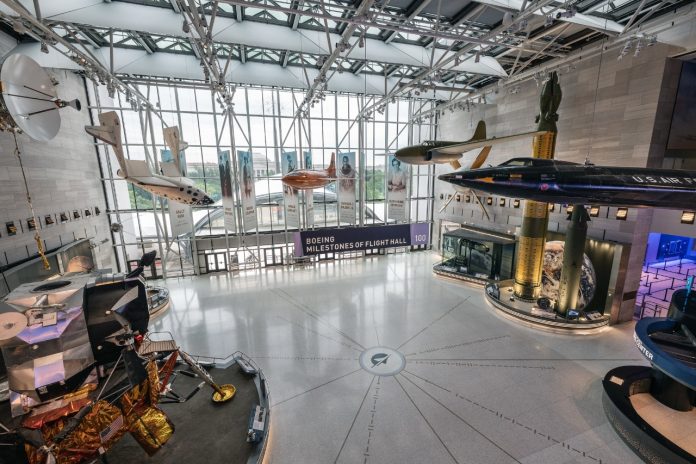The touchable moon rock is back, along with thousands of new artifacts, at the newly opened section of the Smithsonian’s National Air and Space Museum.
Five new and reimagined galleries began welcoming visitors July 28 after closing seven years ago for renovations. The Lockheed Martin IMAX Theater also reopened.
“We have new stories to tell, we have new objects to show,” says Margaret Weitekamp, a curator and chairwoman of the museum’s Space History Department.
This is the second of three reopening phases for one of D.C.’s most popular museums on the National Mall. It closed in 2018 for the $1 billion overhaul and opened eight new exhibits in October 2022. The remainder will be completed next year, in time for the museum’s 50th anniversary and the United States’ 250th birthday.
Weitekamp says the revamp provided an opportunity to rethink what and how artifacts are presented.
“We’ve really re-thought everything, from the floors to the ceilings,” she says.
Here’s a look at what she means.
New Entrance
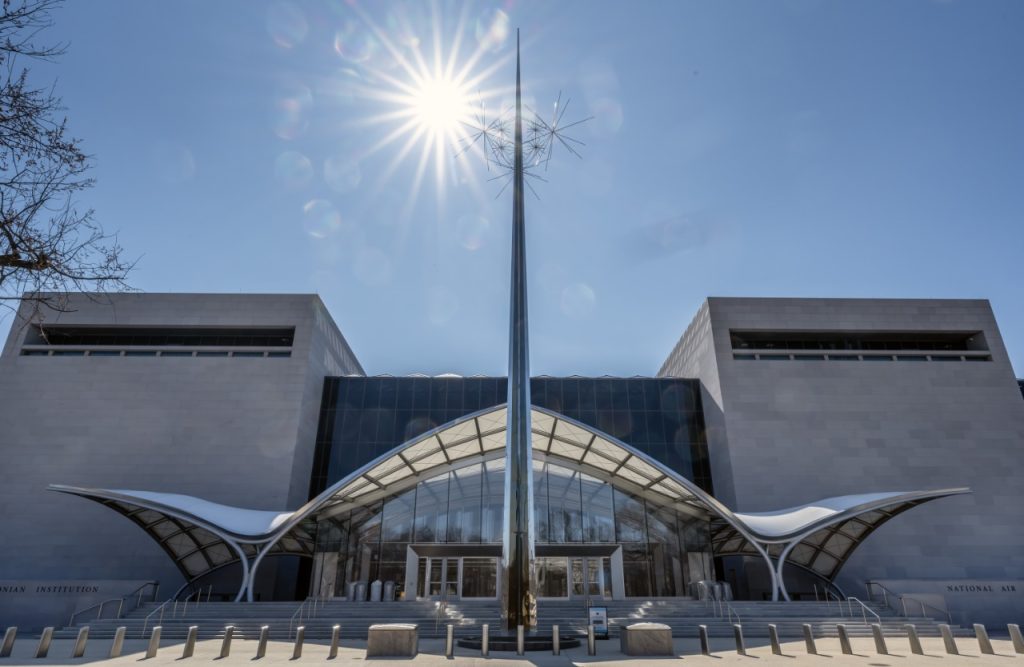
The only entrance for visitors is now on the National Mall side of the building, on Jefferson Drive. The doors on Independence Avenue are exit-only. But would you want to miss passing through this?
“You can see the aerodynamic influence on this vestibule,” Weitekamp says. “Being able to bring visitors in this way creates a much smoother visitor experience. That’s really important to us, that visitors feel welcomed as soon as they come in.”
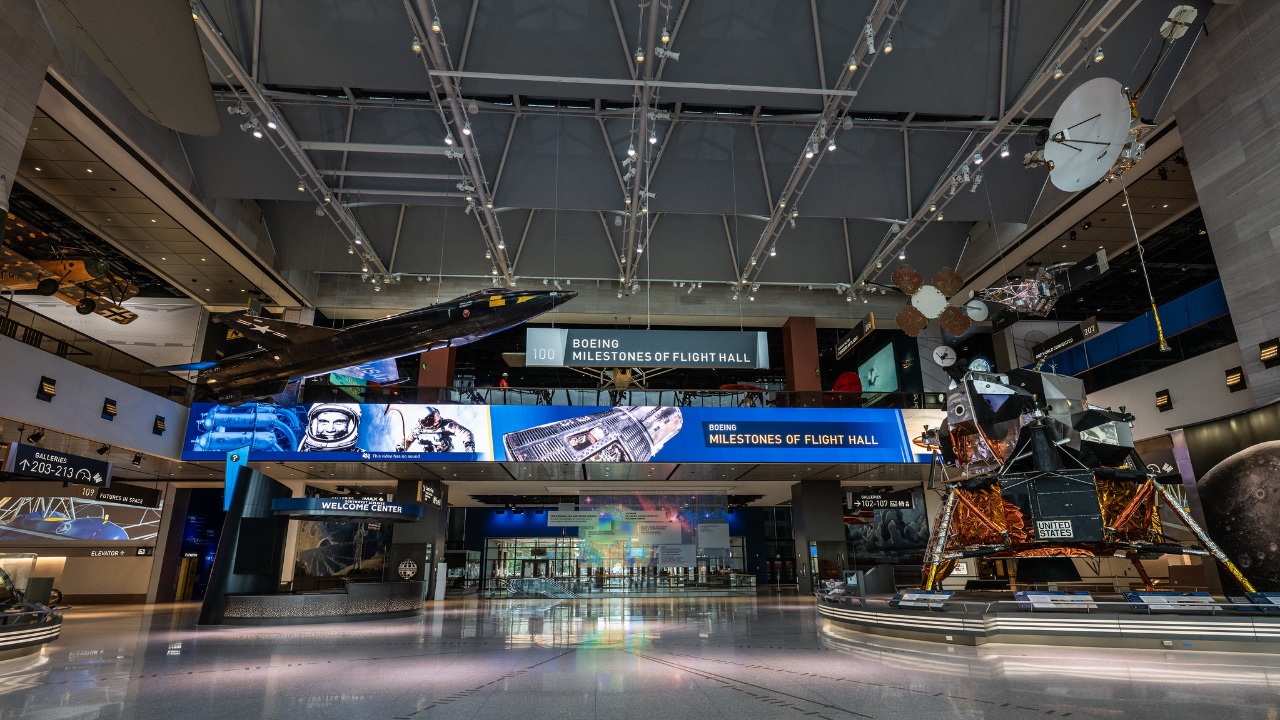
Boeing Milestones of Flight Hall
This is what visitors see upon entering the museum. The hall was renovated in 2016 for the building’s 40th anniversary, so it’s only fitting that it gets another refresh ahead of its 50th, Weitekamp says.
“You will find many of the things in the same positions they were in 2016, but…it seems so much airier and brighter,” Weitekamp says. “We have this wonderful new terrazzo floor and the screen that runs across the mezzanine runs a series of slow slideshows that introduce you to the many different galleries that we have at the museum.”
The symbol on the floor is a pulsar map. (Barely visible in the bottom-center of the above photo, but you can check it out in the photo at the top of this story.) It’s a replica of one that adorned the Pioneer 10 and 11 space probe—the satellite dish-looking item in the photo’s upper right.
“When people built it in the 1970s, they knew that it was going to go outside of our solar system,” she says of the probe. “The pulsar map was a way of mapping to Earth’s solar system from pretty much anywhere in our neighborhood.”
It’s a series of lines that in binary define how far our solar system is from 14 pulsars (remnants of decaying stars). The dots and dashes represent the pulsars’ blink rate. “The blinking of pulsars slows over time,” Weitekamp says. “Since our building famously opened as a birthday present to the nation on its bicentennial, we thought it was fitting to update that to the 250th, so the blink rate is updated for 2026.”
Barron Hilton Pioneers of Flight Hall
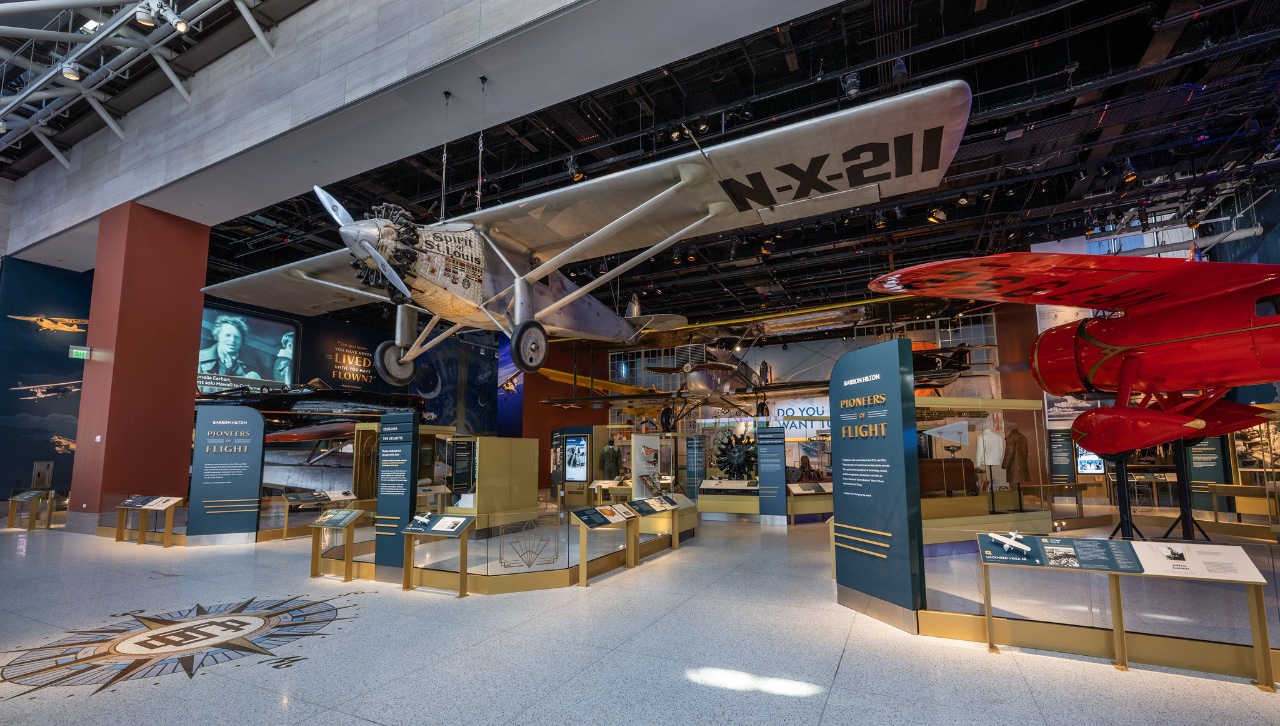
This gallery focuses on the 1920s and the development of aviation between the First World War and the Second World War.
“The colors chosen here—the brassy gold accents, these wonderful bits of deco detailing in the glass on the barriers—[are] ways that our designers bring a unique look that enhances the content about the particular time period.”
Front and center is the Spirit of St. Louis, which Charles Lindbergh flew in 1927, when he became the first aviator to cross the Atlantic Ocean solo. He donated the plane to the Smithsonian a year later.
“Part of bringing it into this gallery was making sure we’re taking the best care of that fabric airplane as we can,” Weitekamp says. “It had been a part of the Milestones of Flight Hall. We moved it here because it is better to have it in a gallery that doesn’t have any windows at all.”
It’s purposely juxtaposed with Amelia Earhart’s bright red Lockheed Vega 5B (on the right), which she was flying in 1932 when she became the first woman to cross the Atlantic solo. She was flying the same plane when she became the first woman to fly nonstop across the United States that same year.
Another nod to Earhart is the medallion on the floor at the bottom left of the photo. It’s the logo of the Ninety-Nines International Organization of Women Pilots. She was the first president of the still-operating organization.
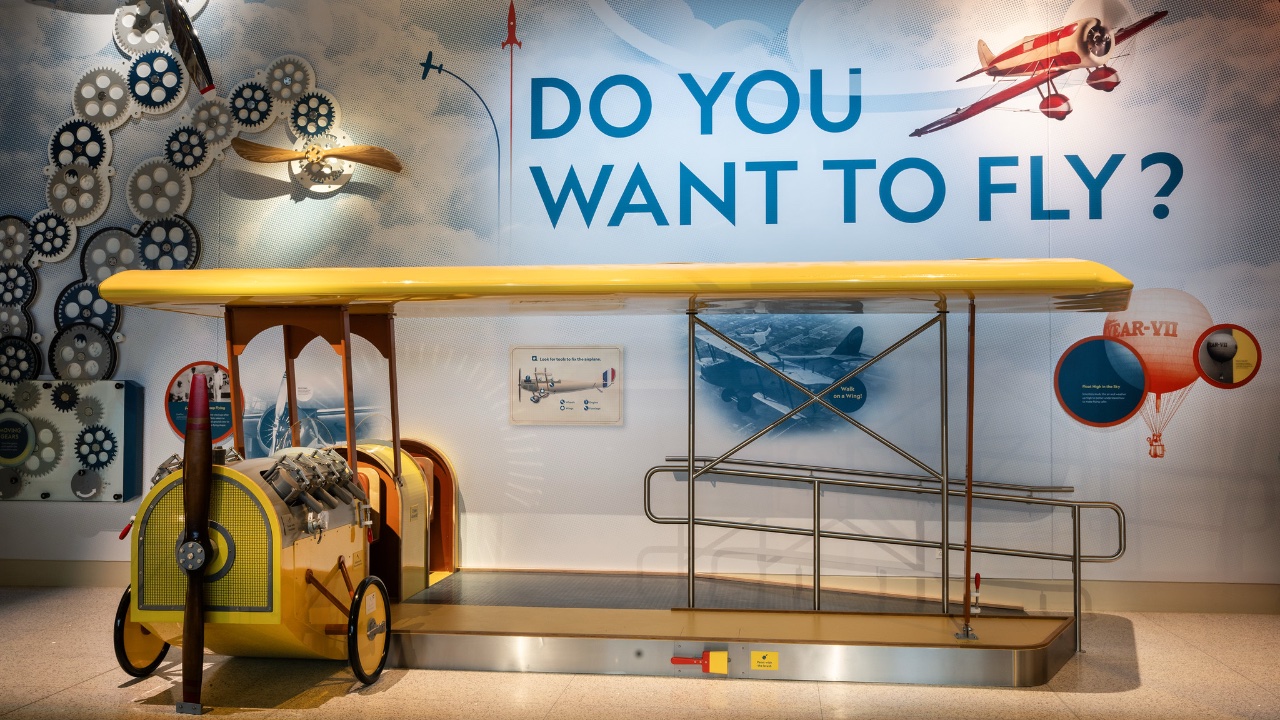
A dedicated space in the back of his gallery is specifically geared towards preschoolers, Weitekamp adds. It “creates a place for them to be able to engage with some of these ideas.” For instance, they can pretend to be a pilot or passenger on the plane in the picture.
World War I: The Birth of Military Aviation
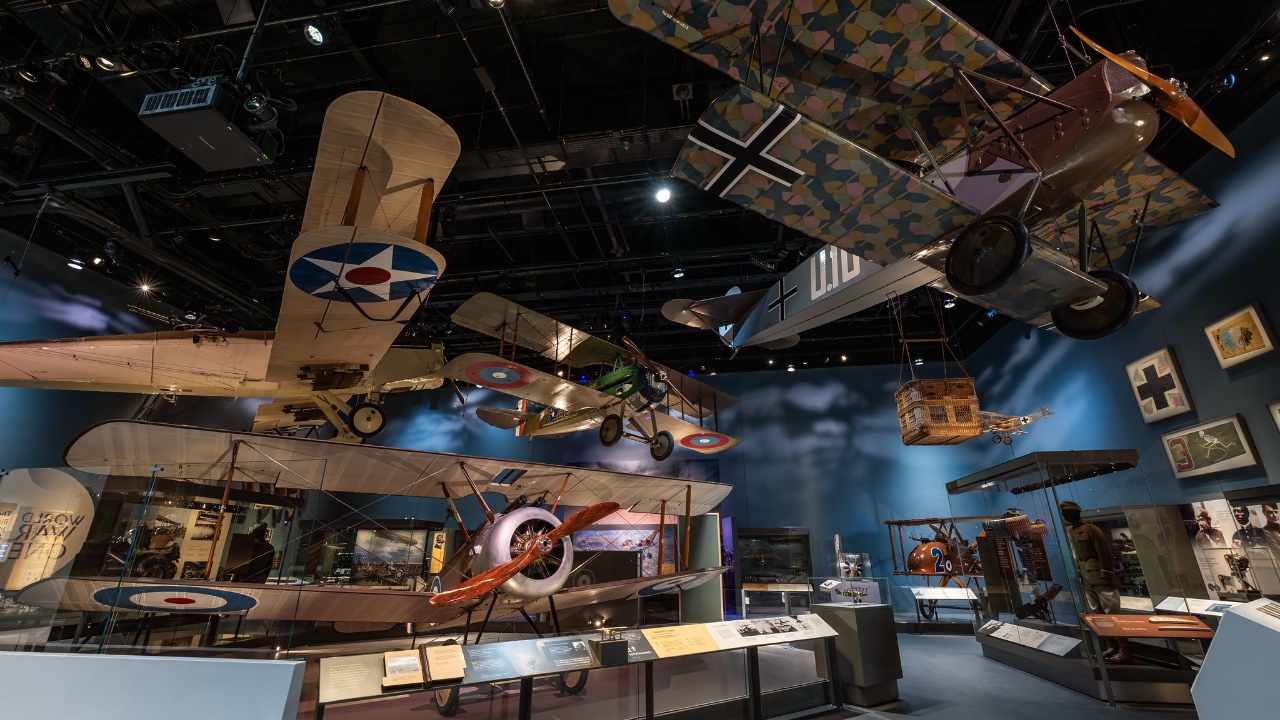
This gallery “starts right off the bat with…a guide to the symbols that are on the wings of each of these World War I aircraft,” informing visitors which symbols were American, British, French and German, Weitekamp says. For instance, the plane on the bottom left is French, while the one above it is American.
The space has five planes. Two more hang just outside the gallery in the concourse. Other artifacts include flying uniforms, armaments and flags.
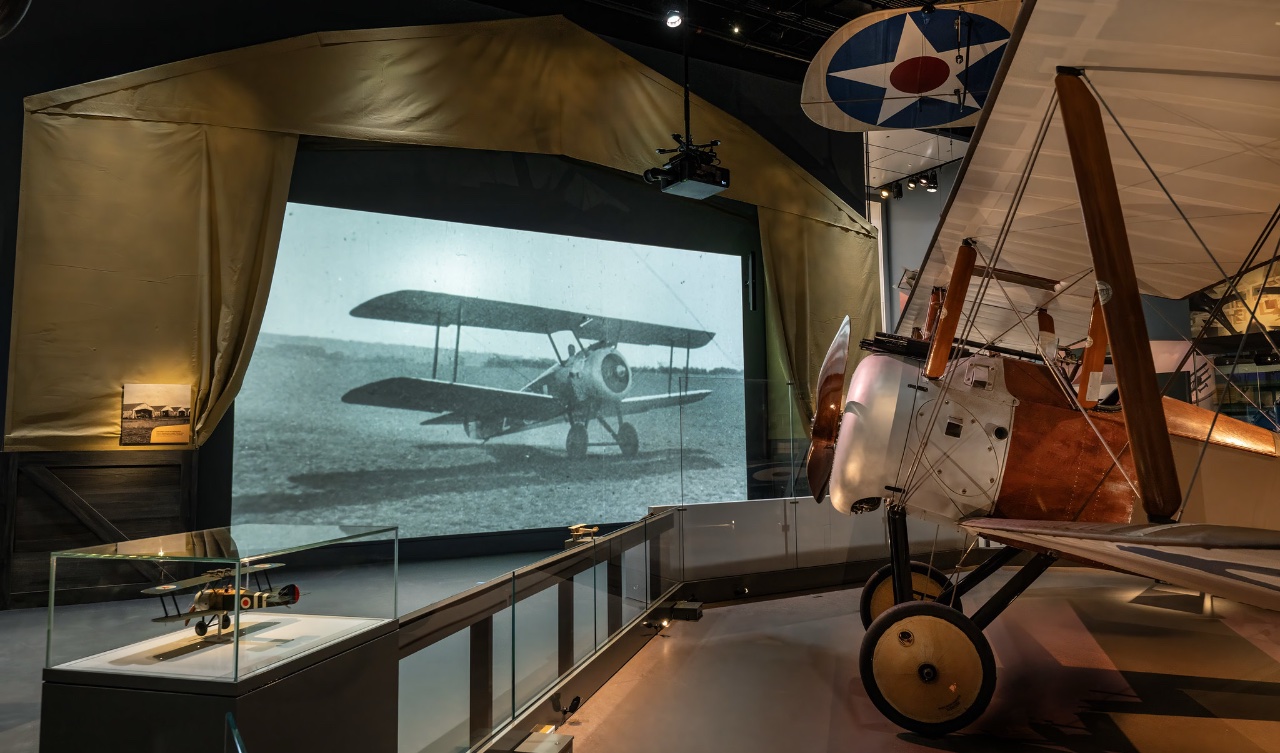
A wall-size screen inside a military tent shows films of the planes back when they were in use. “This gives you a sense of how they moved, what they sounded like, what it looked like from flying in them,” Weitekamp says. “When we have the artifacts, they’re usually still; they’re not flying anymore.”
Futures in Space
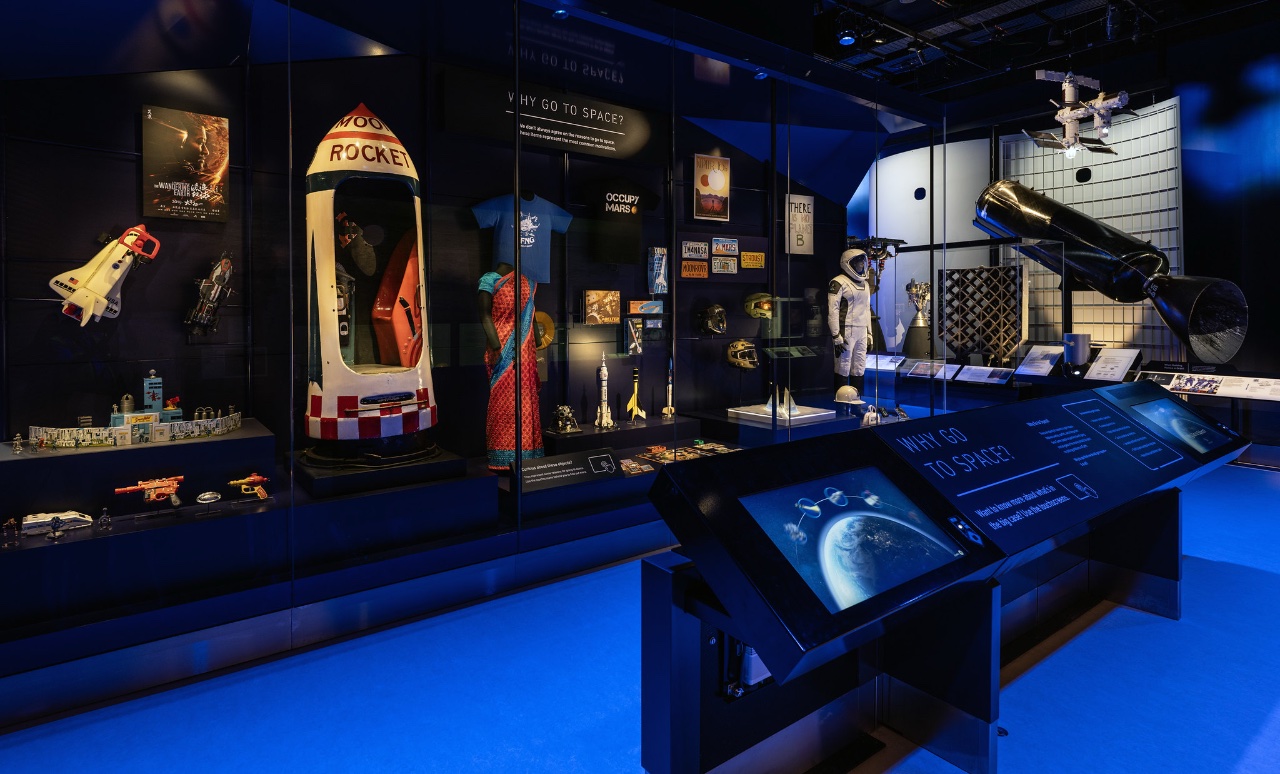
Not everything in the museum is focused on the past. This exhibit explores next-generation technologies, commercial and tourist spaceflight, and ways humans can live in space.
“One of the things the three curators did brilliantly was this innovative artifacts case that looks at the many ways that space flight has been imagined,” Weitekamp says. The back wall showcases an engine and grid panels from a spacecraft. In the front case is a coin-operated rocket that might have stood outside a grocery store in the 1950s or ’60s, and a sari. Nandini Harinath, a scientist with the Indian Space Resources Organisation, wore it when she was part of the Mars Orbiter Mission.
The design of the display is a bit of a departure, Weitekamp says. “Usually we have a label next to each object. In this case, [the captions explaining the artifacts] are embedded in an [interactive] kiosk” called a Conversation Station. It has three screens with rotating panels of recordings by astronauts, scientists, artists, policymakers and students, speaking on topics such as “What would you miss most if you left Earth?”
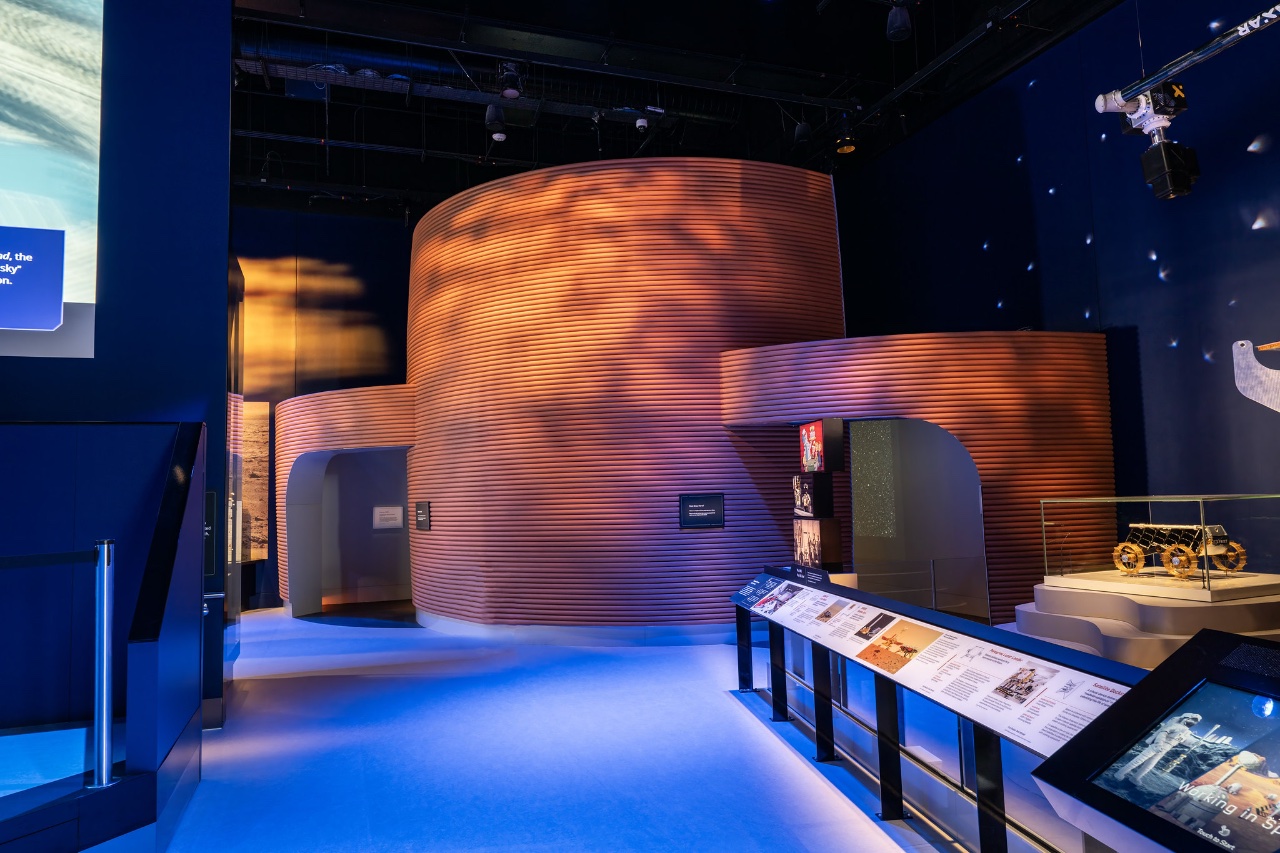
Part of humanity’s curiosity about space revolves around the potential of living on another planet. To that end, this exhibit includes a 3D-printed Mars habitat, as well as a movie theater showing films of people who have done simulations of going to space.
Aerospace and Our Changing Environment

Aerospace and Our Changing Environment is the inaugural exhibit of the Allan and Shelley Holt Innovations Gallery. Dynamic by design, it will introduce new exhibits every 18-24 months, exploring how aerospace innovations affect daily life and transform the future.
The current exhibit explores how drones can provide a more intimate sense of a given area, how satellites monitor atmospheric changes affecting agriculture, and advances in aerodynamics that help with power generation.
“It’s a great combination of…real artifacts [with a] topical focus on aerospace innovations,” Weitekamp says. “We’re going to be continually refreshing this with new objects, new subjects.”
Want to visit the museum? Reserve a free timed entry pass—required to get in—and enter at 650 Jefferson Drive SW, Washington, D.C.
